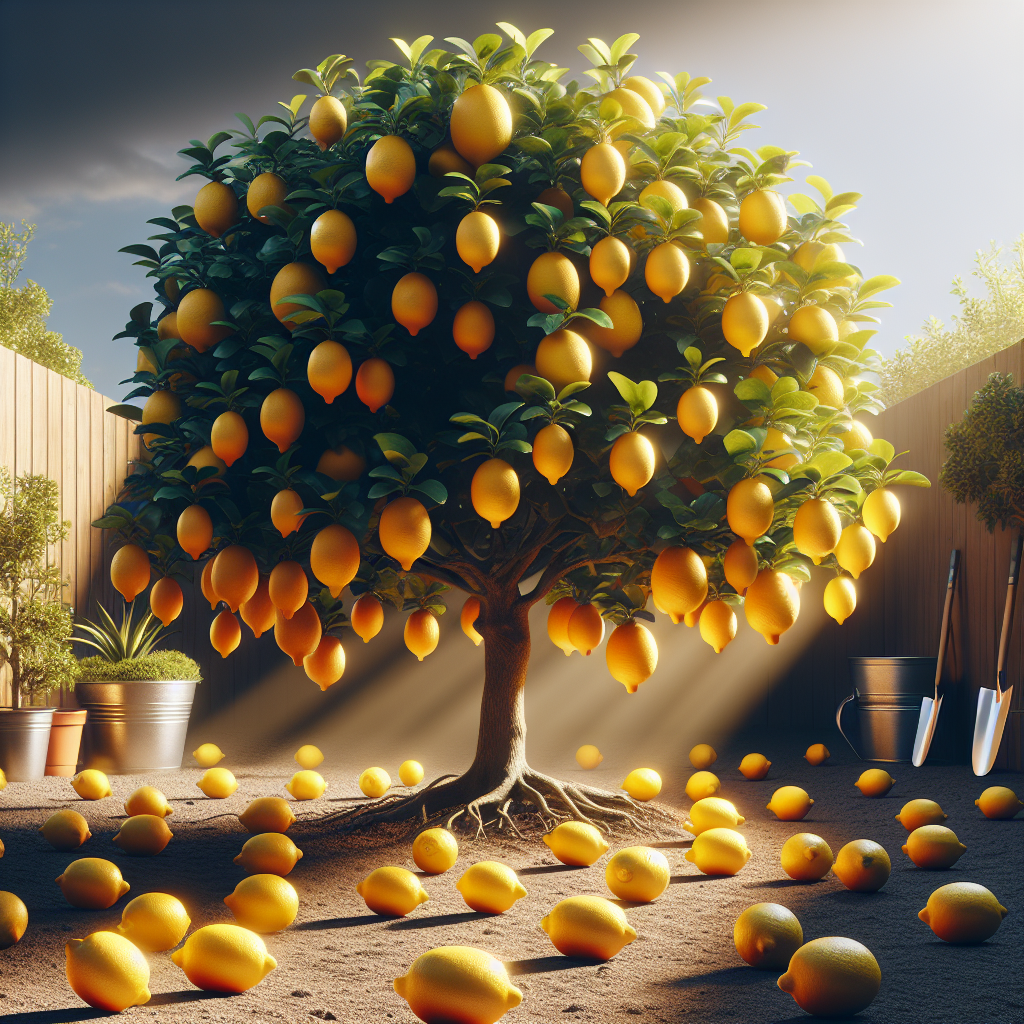Oklahoma’s Garden Threats: Plants to Guard Against
Updated June 7, 2024 at 10:58 pm

Understanding Oklahoma’s Garden Intruders
Oklahoma’s diverse climate poses unique challenges to gardeners, especially when it comes to invasive plants and pests. Being aware of the potential threats can help in maintaining a healthy garden.
Common Invasive Weeds in Oklahoma Gardens
Invasive weeds not only compete with your plants for resources but can also hinder their growth. Let’s dive into some common ones:
- Crabgrass (Digitaria)
- Crabgrass thrives in Oklahoma’s heat and can invade your lawn, creating a less-than-ideal aesthetic and competing fiercely with other plants for water and nutrients.
- Bindweed (Convolvulus arvensis)
- Oklahoma gardeners often struggle with bindweed, which has a deep root system making it hard to eliminate. Its vine-like growth can choke out garden plants and is a real nuisance to deal with.
Identification is key with invasive weeds like these. Crabgrass has a light green color and grows in a star pattern, while bindweed features arrowhead-shaped leaves and trumpet-shaped flowers.
Effective Weed Management Tools
There are numerous products on the market designed to tackle these invasive weeds. Let’s review some popular options:
- Pre-emergent herbicides: These are applied before the weeds germinate. Products like the ‘Preen Garden Weed Preventer’ have been favored for preventing crabgrass from sprouting.
- Post-emergent herbicides: These are for weeds that have already established themselves. A highly recommended product is ‘Roundup Weed and Grass Killer’, known for its effectiveness on bindweed.
Find This and More on Amazon
Garden Pest Alert: The Most Wanted Bugs
Alongside weeds, garden pests can be very troublesome. Here are some bugs that might be giving you a headache:
- Aphids: These tiny pests suck the sap from plants, causing weakness and potential disease transmission. Look out for clusters of small, pear-shaped bugs on the undersides of leaves.
- Squash bugs: As the name suggests, they attack squash plants, among others. Their presence can be spotted by wilting plants and the bugs themselves, which are flat with a brown, speckled appearance.
Action against these pests typically involves both cultural practices, such as removing plant debris, and targeted pest control products like neem oil or insecticidal soap.
Choosing the Right Pesticide for Your Garden
When it comes to pesticides, choosing the right one is crucial. Here’s a quick take on what might work well:
- Neem Oil: An organic option that is effective against a wide variety of pests. A product like ‘Garden Safe Neem Oil Extract’ is often touted for its effectiveness while being safe for beneficial insects when used correctly.
- Insecticidal soaps: These work well against soft-bodied insects and are usually considered safe for the garden. ‘Safer Brand Insect Killing Soap’ is known for controlling aphids without harming plants.
Find This and More on Amazon
Tackling Oklahoma’s Drought Conditions
Drought is another significant concern for Oklahoma gardeners. The right drought-tolerant plants can make a world of difference in your garden’s resilience.
- Xeriscaping: This gardening method focuses on water conservation through the use of native and drought-tolerant plants. Examples include buffalo grass and the Oklahoma redbud, both renowned for their drought resistance.
Using mulch can also help retain soil moisture and stave off drought stress. Products such as ‘EZ-Straw Seeding Mulch’ have received positive reviews for their ability to lock in moisture while being eco-friendly.
Find This and More on Amazon
Natural Alternatives for Weed and Pest Control
While chemicals are one way to handle garden threats, you might be looking for natural approaches that align with sustainable gardening practices.
- Vinegar as herbicide:
- Household vinegar can be an effective natural herbicide. Its acidic nature can kill smaller weeds, though it may not work as well on larger, more established ones.
- Beneficial insects:
- Introducing beneficial insects like ladybugs can help with aphid control. These predators will naturally reduce the population of harmful pests in your garden.
Remember that while natural solutions may be safer for the environment, they sometimes require more persistence and patience for visible results.
Dealing With Plant Diseases in Your Oklahoma Garden
Beyond pests and weeds, plant diseases can wreak havoc in your garden. Staying one step ahead is often the best defense:
- Powdery mildew:
- This fungal disease leaves a white, powdery coating on leaves and can stunt plant growth. Ensuring good air circulation and sun exposure can help prevent its spread.
- Root rot:
- Caused by overwatering and poor drainage, root rot can destroy a plant from the ground up. Make sure to water appropriately and use well-draining soil to mitigate the risk.
For advanced cases, fungicides such as ‘Spectracide Immunox Multi-Purpose Fungicide Spray Concentrate’ are often recommended by gardeners for their reliable results against a variety of plant diseases.
Best Practices for Healthy Soil in Oklahoma
Good soil health is the foundation of any thriving garden. Oklahoma’s red clay soil can be challenging, but with the right practices, you can improve its quality:
- Regular soil testing:
- Understanding your soil’s composition and nutrient levels is critical. It can help you choose the appropriate amendments and fertilizers. Soil test kits, like the ‘Luster Leaf Rapitest Test Kit’, are handy for this purpose.
- Composting:
- Adding compost can greatly improve soil structure and fertility. Plus, it’s an excellent way to recycle kitchen and garden waste.
Amending your soil with organic material can significantly boost its ability to sustain plant life and retain moisture, especially during those hot Oklahoma summers.
Understanding Oklahoma’s Native Plants and Their Benefits
Incorporating native plants in your garden isn’t just a trend; it’s a practical approach to gardening in Oklahoma. They’re adapted to the local climate and can be easier to maintain:
- Indian Grass (Sorghastrum nutans):
- This native perennial grass is known for its hardiness and tall, flowing appearance. It’s an excellent choice for adding texture to your garden while fostering local wildlife.
- Black-eyed Susan (Rudbeckia hirta):
- A staple in many Oklahoma gardens, this cheerful yellow flower is drought-resistant and attracts pollinators such as butterflies and bees.
Embracing native species not only eases your gardening tasks but also supports local ecosystems and biodiversity.
Expert Resources and Gardening Communities in Oklahoma
Facing garden threats can be daunting, but you don’t have to do it alone. There’s a wealth of local expertise and community support available:
- Local extension services:
- The Oklahoma Cooperative Extension Service offers resources, workshops, and expert advice suited to local conditions — a valuable asset for any gardener.
- Gardening clubs and groups:
- Joining local gardening clubs or online forums can be immensely helpful. You can share experiences, swap tips, and get support from fellow garden enthusiasts.
Seeking out these resources can enhance your gardening experience and provide solutions tailored to Oklahoma’s unique gardening challenges.
Resourceful Gardening: Saving Water and Money in Oklahoma
Conserving water while gardening in Oklahoma can benefit both the environment and your wallet. Implementing water-saving techniques and utilizing efficient irrigation systems are smart practices every gardener should consider.
- Drip Irrigation:
- By delivering water directly to the plant roots, systems like the ‘Rain Bird Gardeners Drip Kit’ reduce water waste and are highly effective for gardeners looking to maximize efficiency while minimizing water usage.
- Rain Barrels:
- Collecting rainwater is an economical way to water your plants. The ‘Good Ideas RW50-OAK Rain Wizard Rain Barrel’ has been praised for its durability and ease of use, providing a cost-effective water source for your garden needs.
The initial investment in these water conservation methods can lead to significant long-term savings and contribute to a more sustainable gardening approach.
Maintaining Garden Health During Severe Weather
Oklahoma’s weather can be unpredictable, with the potential for severe storms that can damage gardens. Protective measures can help mitigate the impact of harsh weather.
- Protective Netting:
- Products such as the ‘Dalen Gardeneer Bird-X Protective Netting’ are effective in shielding plants from hail and heavy rain, and it’s often cited for its durability and ease of installation.
- Garden Cloches:
- Using garden cloches, like the ‘Haxnicks Easy Fleece Jackets’, can protect individual plants from sudden freezes and even extend the growing season by providing a microclimate.
While no method offers complete protection against severe weather, these measures can greatly reduce the risk of damage, allowing your garden to recover more quickly.
Gardening with Children: Encouraging the Next Generation
Introducing children to gardening in Oklahoma can be both educational and fun. With the right approach, you can cultivate a love for gardening while teaching valuable life lessons.
- Start with Easy Plants:
- Choose plants that are easy to grow and resilient, like sunflowers or cherry tomatoes, to give kids a sense of accomplishment as they watch their efforts come to fruition.
- Child-Sized Tools:
- Incorporate tools designed for small hands, such as the ‘G & F Products JustForKids Soft Jersey Kids Garden Gloves’ and the ‘Melissa & Doug Sunny Patch Giddy Buggy Cultivator’, to make the experience more enjoyable and manageable for young gardeners.
Creating a positive and successful gardening experience for children not only teaches them about nature and science but also about patience and responsibility.
Wrapping Up: Oklahoma’s Garden Vigilance
Being vigilant and proactive about the potential threats to your Oklahoma garden is crucial. By recognizing and taking steps to mitigate invasive weeds, troublesome pests, diseases, and environmental stressors, you can enjoy a lush and vibrant garden. Remember to integrate both modern and traditional methods to achieve the best results.
Oklahoma gardeners have unique challenges, but with careful planning, the right resources, and a little bit of Oklahoma grit, you can cultivate a garden that not only survives but thrives. Good luck and happy gardening!
Shop more on Amazon

